 Image 1 of 12
Image 1 of 12

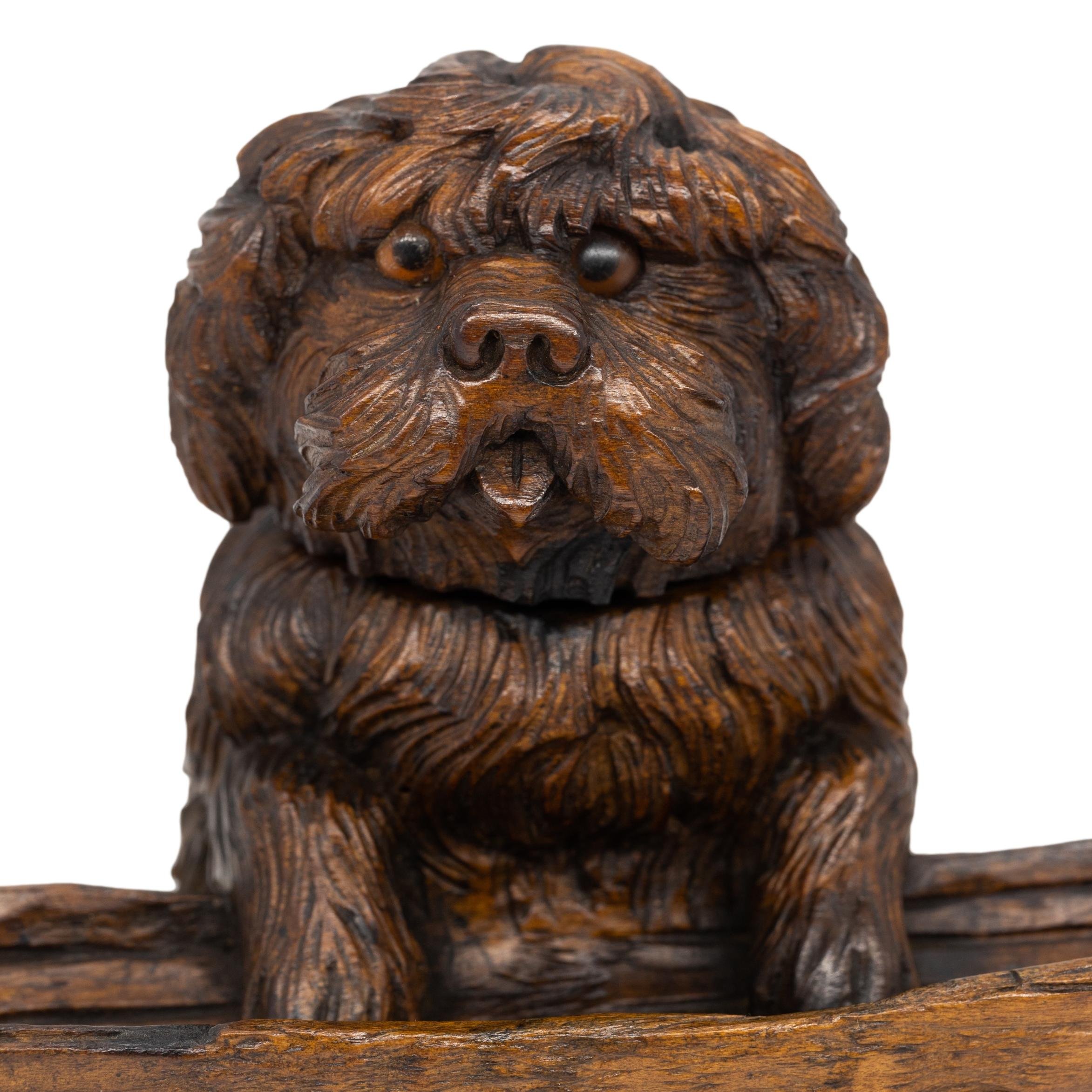 Image 2 of 12
Image 2 of 12

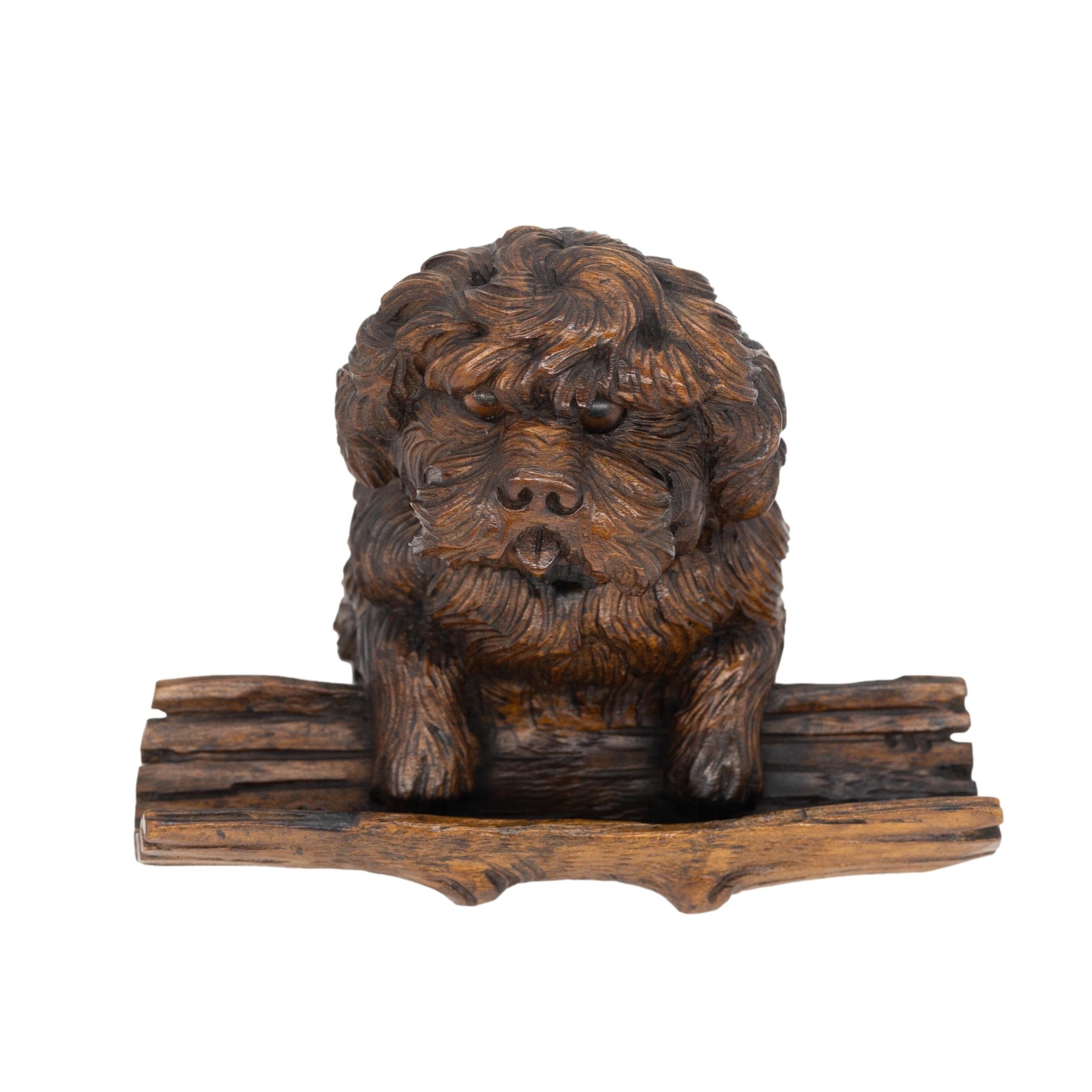 Image 3 of 12
Image 3 of 12

 Image 4 of 12
Image 4 of 12

 Image 5 of 12
Image 5 of 12

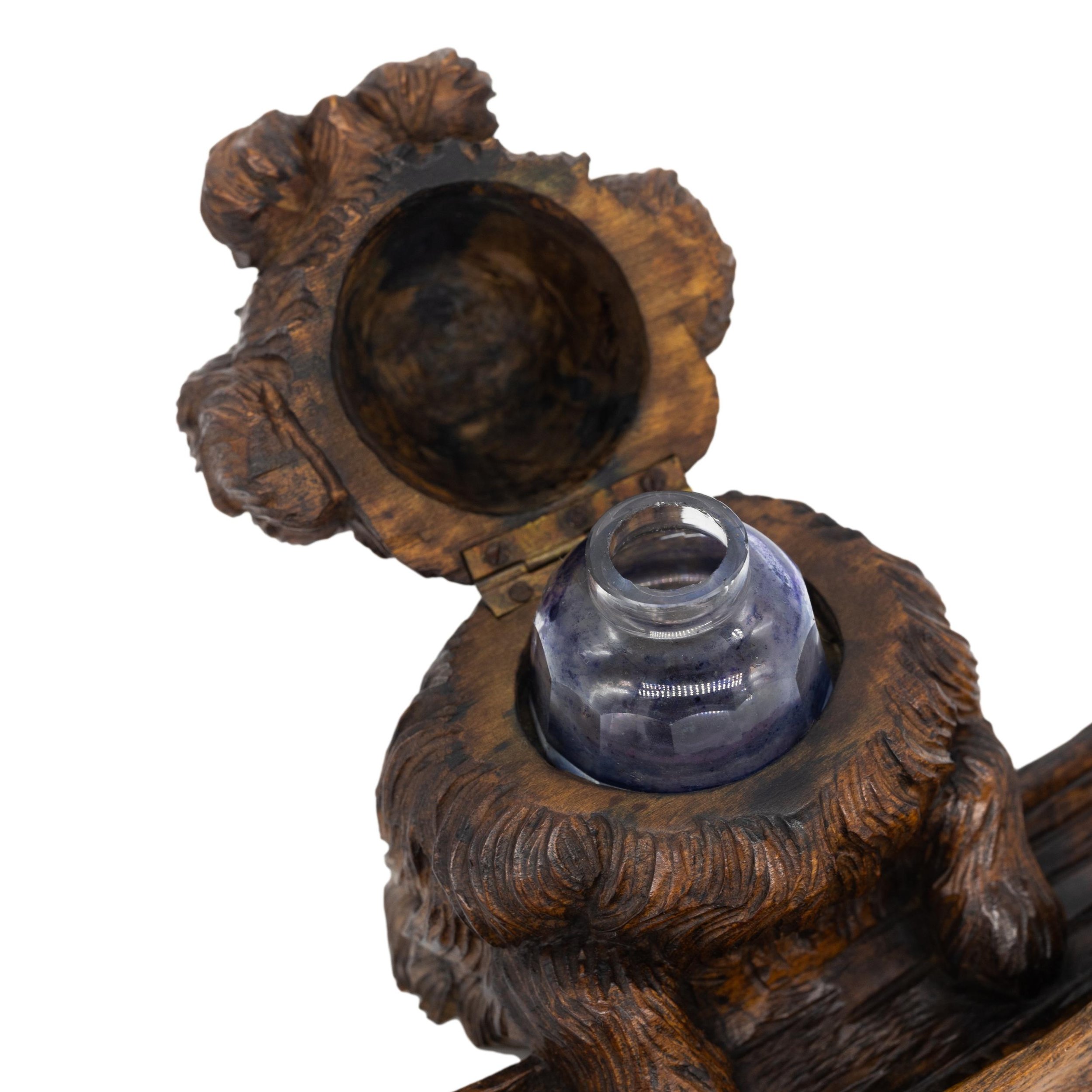 Image 6 of 12
Image 6 of 12

 Image 7 of 12
Image 7 of 12

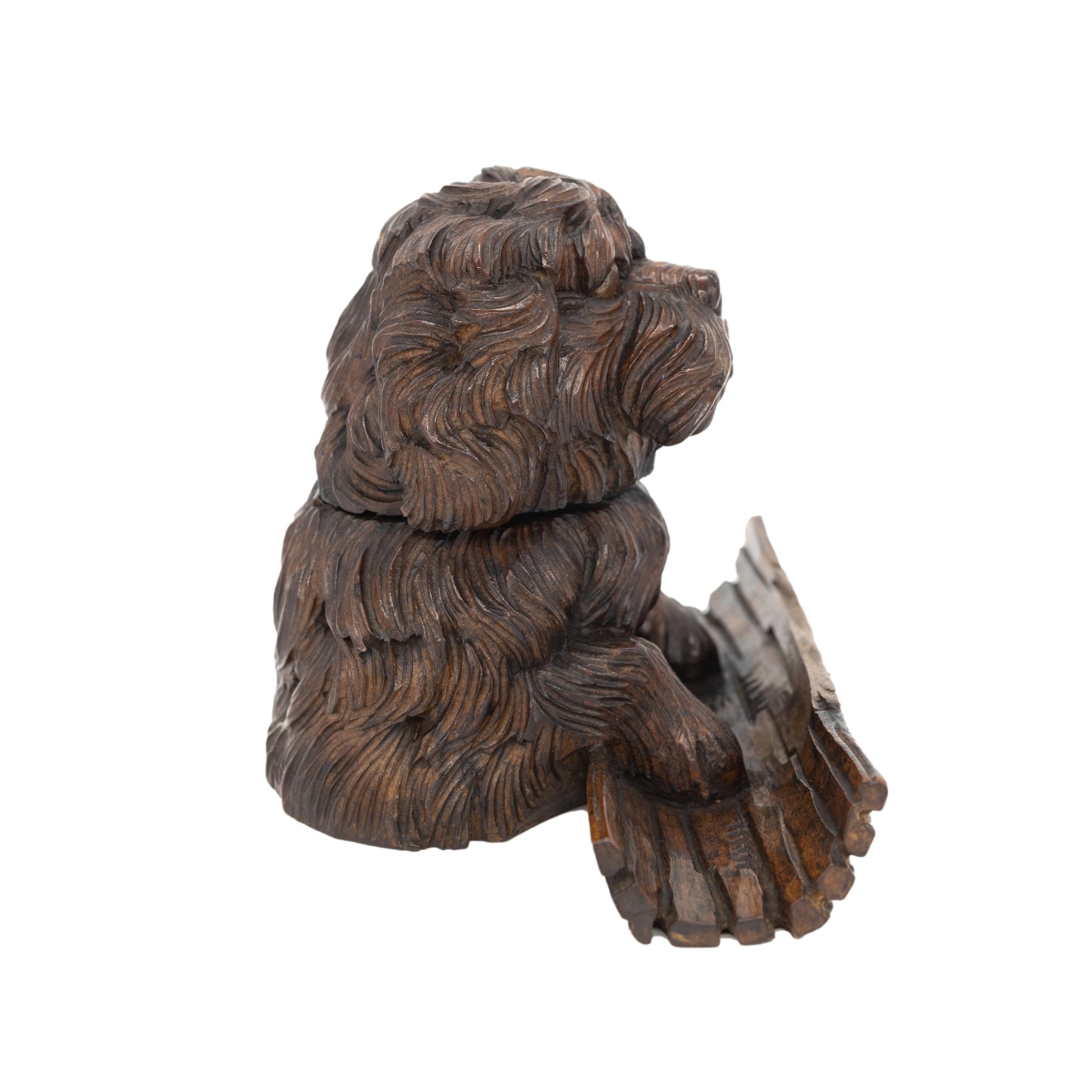 Image 8 of 12
Image 8 of 12

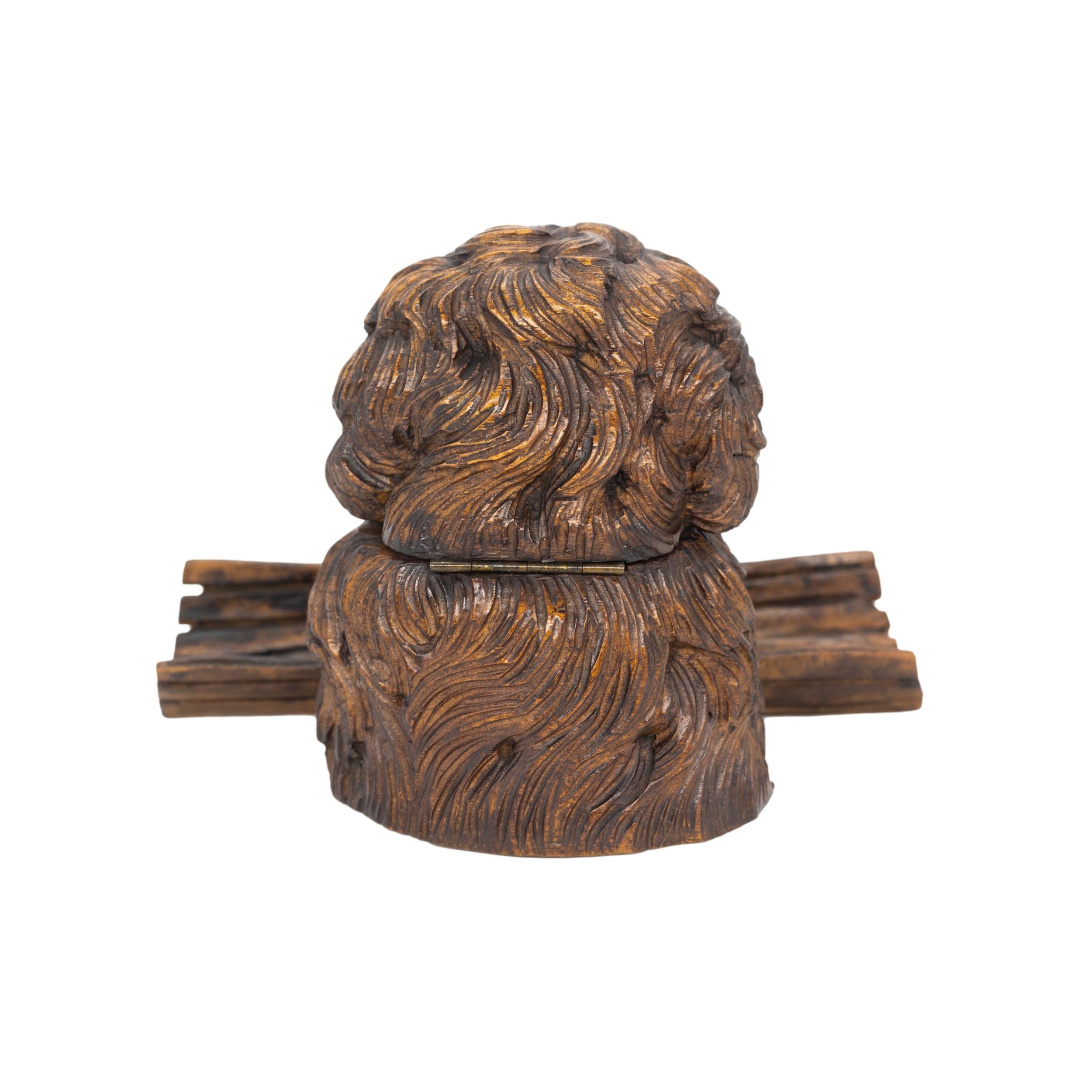 Image 9 of 12
Image 9 of 12

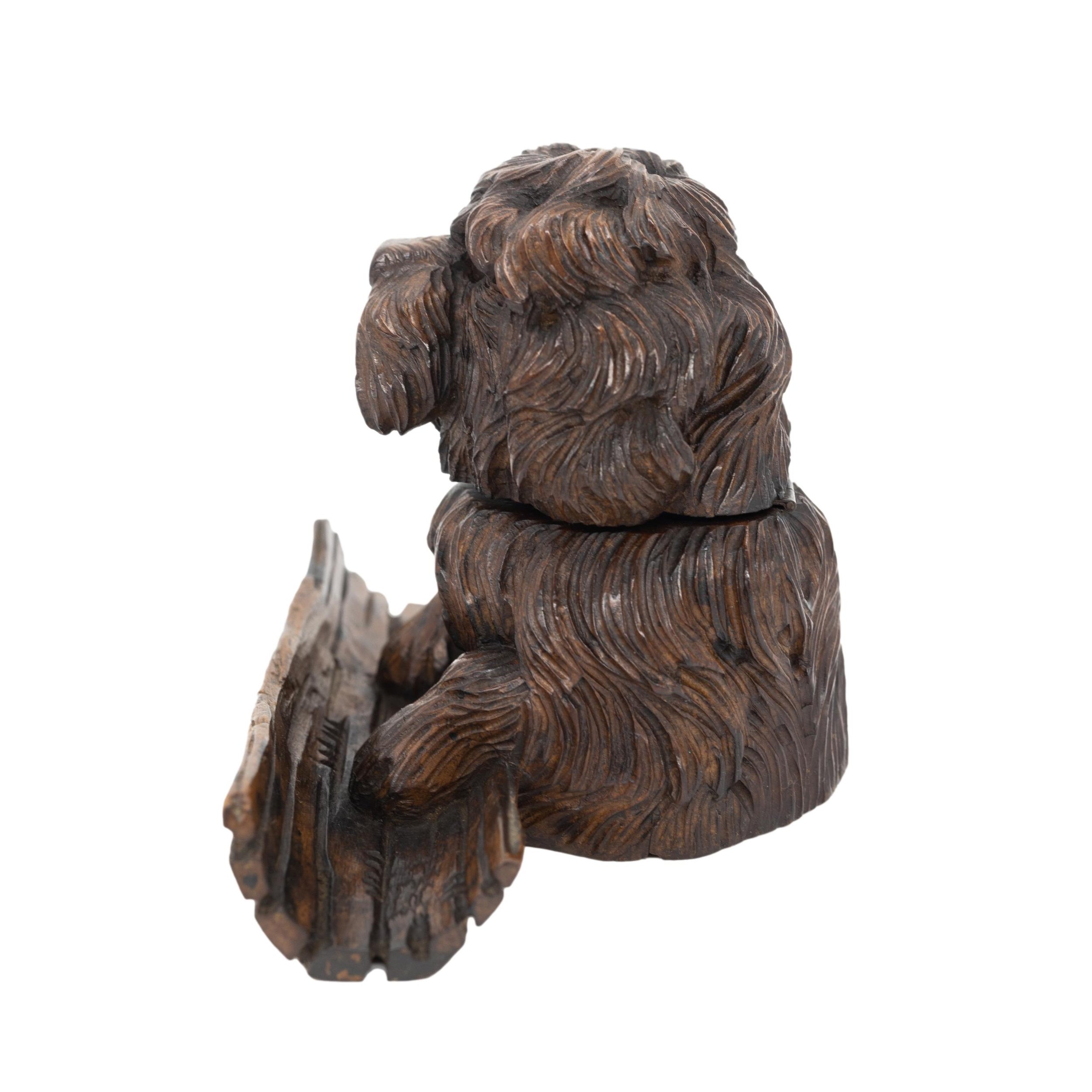 Image 10 of 12
Image 10 of 12

 Image 11 of 12
Image 11 of 12

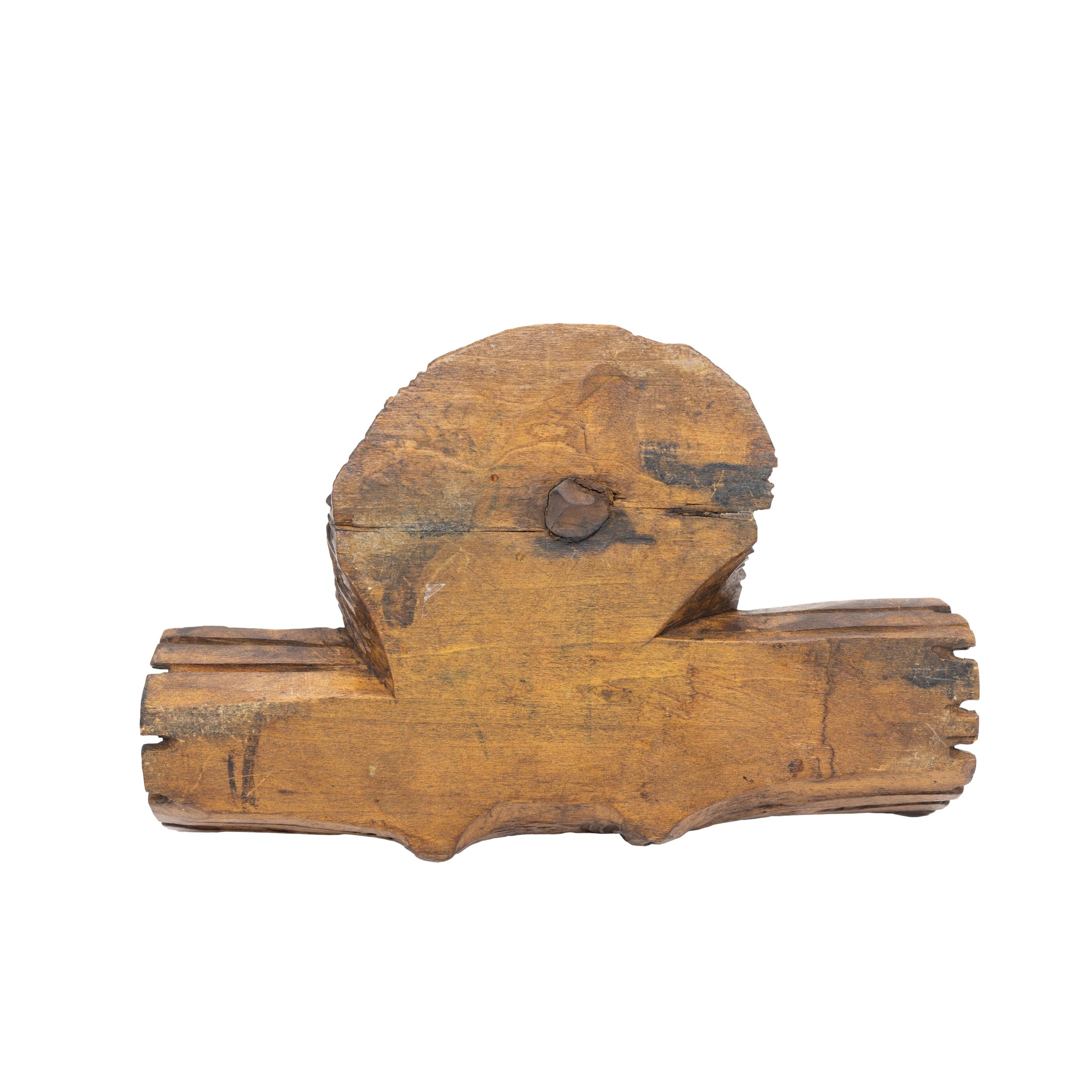 Image 12 of 12
Image 12 of 12

Black Forest Carved Terrier Inkwell, Hinged Lid, with Pen Tray, Swiss, ca. 1880
Black Forest Breinzware Inkwell, carved as begging terrier with tongue protruding, with inset glass eyes, the hinged head concealing a glass inkwell, the dogs front paws mounted on a naturalistically carved hollowed tree forming the pen tray, Brienz, Switzerland ca. 1880.
*Jay Arenski, et al, quotes Swiss Poet Heinrich Federer, who said in his memoirs, "Woodcarving brought riches to the village [of Brienz]. It became all the fashion and no Englishman left the Bernese Highlands without having seen the Giessbach, having eaten a fat roasted eel, and having bought a Brienz woodcarving." Arenski continues, "Thus, as the tourist industry flourished and thrived, so did the carvers, selling their wares to the well-heeled visitors."
This fashion had been set in motion by Queen Victoria's visit to the area in April 1868, and by her subsequent inspiration to build a Swiss chalet at Osborne House and fill it with Black Forest Swiss carvings (see footnote).
BOOK REFERENCE:
Jay Areneski, Simon Daniels and Michael Daniels, Swiss Carvings: The Art of the 'Black Forest' 1820-1940, Suffolk, UK: Antique Collectors' Club, Publishers, 2005, pp. 13-14.
Black Forest Breinzware Inkwell, carved as begging terrier with tongue protruding, with inset glass eyes, the hinged head concealing a glass inkwell, the dogs front paws mounted on a naturalistically carved hollowed tree forming the pen tray, Brienz, Switzerland ca. 1880.
*Jay Arenski, et al, quotes Swiss Poet Heinrich Federer, who said in his memoirs, "Woodcarving brought riches to the village [of Brienz]. It became all the fashion and no Englishman left the Bernese Highlands without having seen the Giessbach, having eaten a fat roasted eel, and having bought a Brienz woodcarving." Arenski continues, "Thus, as the tourist industry flourished and thrived, so did the carvers, selling their wares to the well-heeled visitors."
This fashion had been set in motion by Queen Victoria's visit to the area in April 1868, and by her subsequent inspiration to build a Swiss chalet at Osborne House and fill it with Black Forest Swiss carvings (see footnote).
BOOK REFERENCE:
Jay Areneski, Simon Daniels and Michael Daniels, Swiss Carvings: The Art of the 'Black Forest' 1820-1940, Suffolk, UK: Antique Collectors' Club, Publishers, 2005, pp. 13-14.
Black Forest Breinzware Inkwell, carved as begging terrier with tongue protruding, with inset glass eyes, the hinged head concealing a glass inkwell, the dogs front paws mounted on a naturalistically carved hollowed tree forming the pen tray, Brienz, Switzerland ca. 1880.
*Jay Arenski, et al, quotes Swiss Poet Heinrich Federer, who said in his memoirs, "Woodcarving brought riches to the village [of Brienz]. It became all the fashion and no Englishman left the Bernese Highlands without having seen the Giessbach, having eaten a fat roasted eel, and having bought a Brienz woodcarving." Arenski continues, "Thus, as the tourist industry flourished and thrived, so did the carvers, selling their wares to the well-heeled visitors."
This fashion had been set in motion by Queen Victoria's visit to the area in April 1868, and by her subsequent inspiration to build a Swiss chalet at Osborne House and fill it with Black Forest Swiss carvings (see footnote).
BOOK REFERENCE:
Jay Areneski, Simon Daniels and Michael Daniels, Swiss Carvings: The Art of the 'Black Forest' 1820-1940, Suffolk, UK: Antique Collectors' Club, Publishers, 2005, pp. 13-14.

